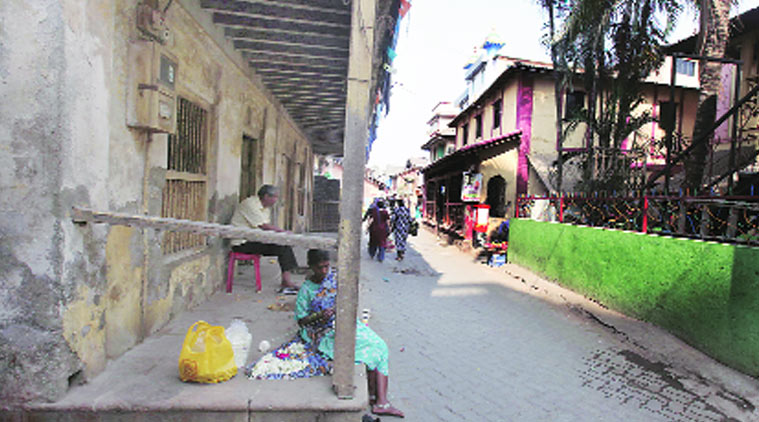- India
- International
Marol, a village where Portuguese interfuses seamlessly with Marathi
In the faint evening light, the house of Edwick Nunes is easy to spot, courtesy the red tiles that adorn the single floor structure.
 Marol village in Andheri East. Vasant Prabhu
Marol village in Andheri East. Vasant Prabhu
Walking through narrow bylanes of Marol village in Andheri East, one can hear the evening service in progress at the village church. As Hallelujahs fills the air, you suddenly realise that barely a few hundred metres from busy roads and honking traffic in one of Mumbai’s busiest suburbs, the village has managed to distance itself from the hurly-burly of the city.
In the faint evening light, the house of Edwick Nunes is easy to spot, courtesy the red tiles that adorn the single floor structure. Nunes, now retired at 73, smiles as he talks about the years he has spent in Marol, “We used to have a beautiful house, with a balcony, Mangalore tiles and a loft. Today, the house looks very different”,” he reminisces.
[related-post]
Traditional life of the 4,000-odd East Indians who live in Marol along with Hindus and Muslims has changed in recent decades, especially with the quickening pace of redevelopment. “There used to be 189 villages in the city; only 125 remain,” says Godfrey Pimenta, a local and lawyer, also vice-president of the Bombay East India Association.
“The government wants to wipe off the gaothans and create a concrete jungle,” says Pimenta, who has lived here all his life. He points out that the draft Development Plan of the BMC actually termed the gaothans as ‘slum clusters’ despite the heritage value of the structures here.
The nearby St John Evangelist Church has been an important binding factor for the East Indians here ever since its establishment in 1840, say locals. Some aspects of traditional East Indian life remain visible, including the regular merrymaking. There is also a competition in the village, an Aagera or Harvest Feast and Introz, a feast before the period of abstinence commences.

Harking back to another time, Nunes says, “There used to be ample open spaces for us to play, wells where we learnt how to swim and a tank where one could go fishing. It was simply beautiful… but all that is gone now.” He says, “the East Indians were originally the most preferred candidates for jobs during the British Raj, owing to their proficiency in English. The arrival of Catholics from other cities over the years saw competition stiffening and an amalgamation of cultures.
Today, some East Indians in Marol continue to speak a blend of Marathi and Portuguese. “Our language is corrupt Marath,” jokes Pimenta. Their weddings take place in a church but some Maharashtrian rituals like umbracha paani and haldi kumkum are also followed. Pimenta has been fighting with others from the community to shield the gaothans from rash and unplanned development. “All you can do is zealously protect your identity,” he says.
Have a comment or suggestion for Postcard From A Mumbai Village? Write to mumbai.newsline @expressindia.com with subjectline: Postcard From A Mumbai Village
Apr 26: Latest News
- 01
- 02
- 03
- 04
- 05








































